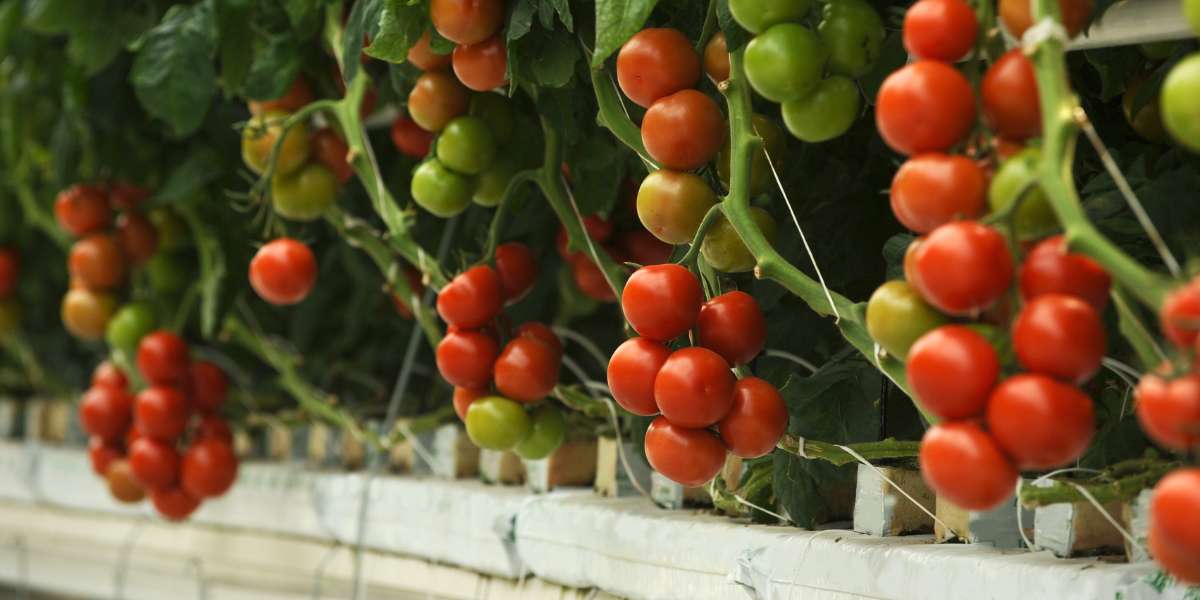Tomatoes and peppers are two of the most rewarding crops to grow hydroponically. Their vibrant colors, rich flavors, and versatility in the kitchen make them favorites for gardeners. If you’re wondering whether these fruiting plants can thrive without soil, the answer is a resounding yes! Hydroponic systems provide everything tomatoes and peppers need for healthy growth, high yields, and delicious results. Here’s how you can grow these plants successfully.
Why Grow Tomatoes and Peppers Hydroponically?
Growing tomatoes and peppers hydroponically offers several benefits compared to traditional soil gardening:
- Faster Growth: Hydroponics provides plants with direct access to nutrients, speeding up growth and reducing the time to harvest.
- Higher Yields: Controlled environments lead to consistent, abundant harvests.
- Space Efficiency: Compact hydroponic systems allow you to grow these crops indoors or in small spaces.
- Cleaner Gardening: No soil means no weeds, pests, or mess.
Choosing the Right Hydroponic System
Tomatoes and peppers need systems that can support their size and nutrient requirements. Here are the best options:
- Deep Water Culture (DWC): Great for smaller pepper plants, DWC systems submerge roots in nutrient-rich water with oxygen provided by an air pump.
- Drip Systems: Ideal for both tomatoes and peppers, this setup delivers nutrients directly to each plant’s roots.
- Nutrient Film Technique (NFT): Works well for compact pepper varieties, but larger tomato plants may need additional support.
- Bucket Systems (Dutch Buckets): Perfect for large plants, these systems provide ample root space and drainage.
What You’ll Need to Get Started
Here’s a list of essentials for growing tomatoes and peppers hydroponically:
- Seeds or seedlings of your chosen variety
- A hydroponic system suited for fruiting plants
- Hydroponic growing medium (like clay pebbles or coco coir)
- A nutrient solution specifically formulated for fruiting plants
- LED grow lights for indoor setups
- Plant supports (like stakes or trellises) for large plants
- A pH testing kit and pH adjusters
Step-by-Step Guide
Follow these steps to grow thriving tomato and pepper plants in your hydroponic garden:
1. Choose the Right Varieties
- Tomatoes: Cherry tomatoes and compact bush varieties are easier for beginners. Larger varieties may require more space and support.
- Peppers: Bell peppers, jalapeños, and smaller chili peppers are excellent options for hydroponics.
2. Germinate Seeds or Transplant Seedlings
Start seeds in a growing medium like rock wool cubes or transplant healthy seedlings into your system. Ensure the roots have access to water and nutrients.
3. Provide Adequate Lighting
Tomatoes and peppers are light-loving plants. They need 12–16 hours of bright light daily. Use LED grow lights if natural sunlight is insufficient.
4. Maintain Nutrient Levels
These plants require nutrient solutions rich in nitrogen during the vegetative stage and higher potassium and phosphorus levels during flowering and fruiting. Keep the pH between 5.5 and 6.5.
5. Control Temperature and Humidity
- Temperature: Maintain daytime temperatures between 70–80°F and nighttime temperatures above 60°F.
- Humidity: Keep humidity levels between 50–70% to prevent disease and encourage healthy growth.
6. Support the Plants
Both tomatoes and peppers benefit from support structures. Use stakes, cages, or trellises to keep the plants upright and prevent damage to the fruit.
7. Pollinate the Flowers
In indoor systems, you’ll need to assist with pollination. Gently shake the plant or use a small brush to transfer pollen between flowers.
8. Monitor and Prune
Regularly check for signs of nutrient deficiencies, pests, or diseases. Prune excess foliage to improve airflow and focus the plant’s energy on producing fruit.
Harvesting Your Crops
- Tomatoes: Harvest when they’re fully colored and firm to the touch.
- Peppers: Pick peppers once they reach their desired size and color. Leaving them on the plant longer can intensify their sweetness or heat.
What’s Your Next Hydroponic Adventure?
Now that you know how to grow tomatoes and peppers hydroponically, what other crops are you excited to try? Share your gardening goals and any questions you have in the comments or with your gardening community. Let’s keep growing together!
